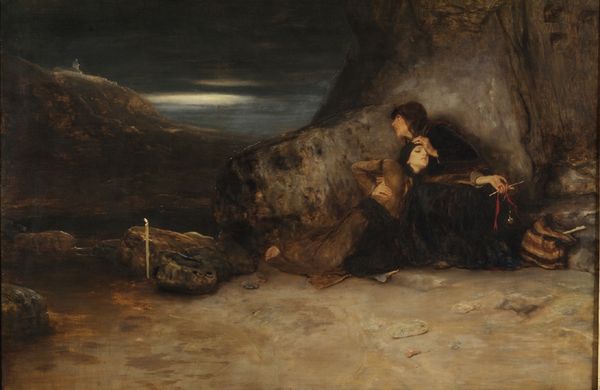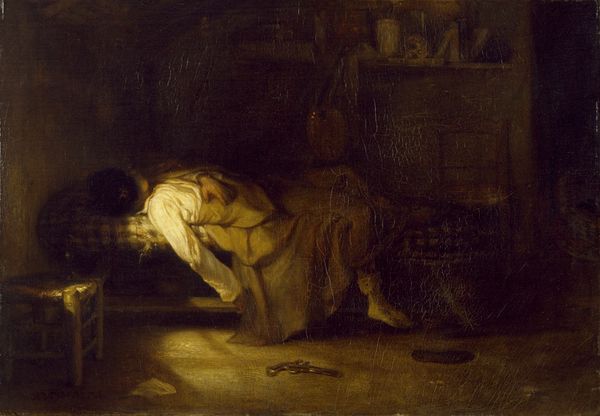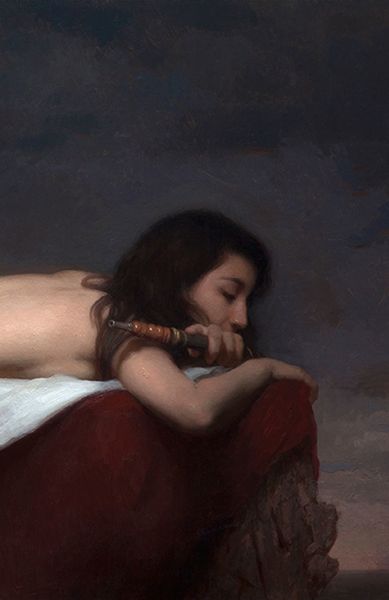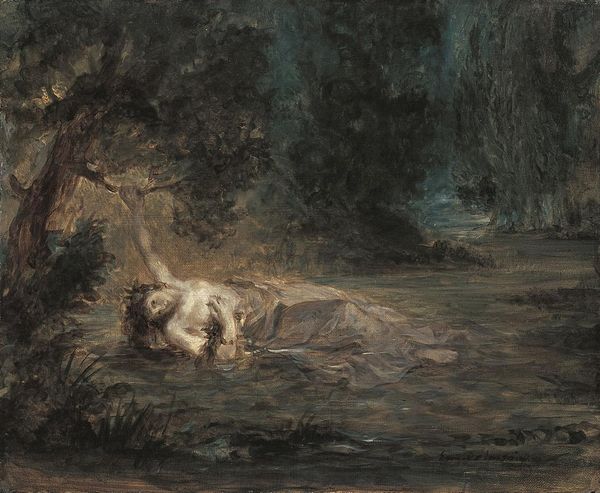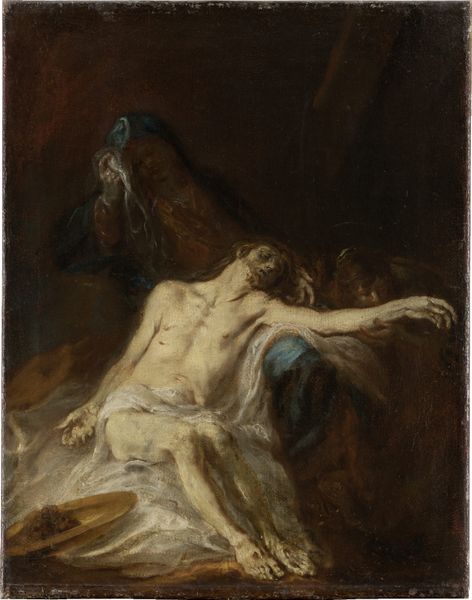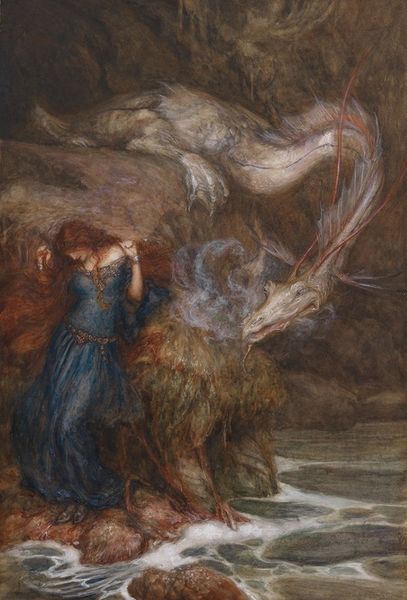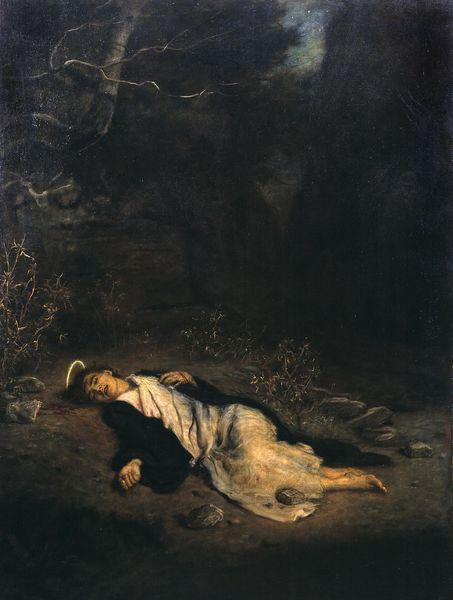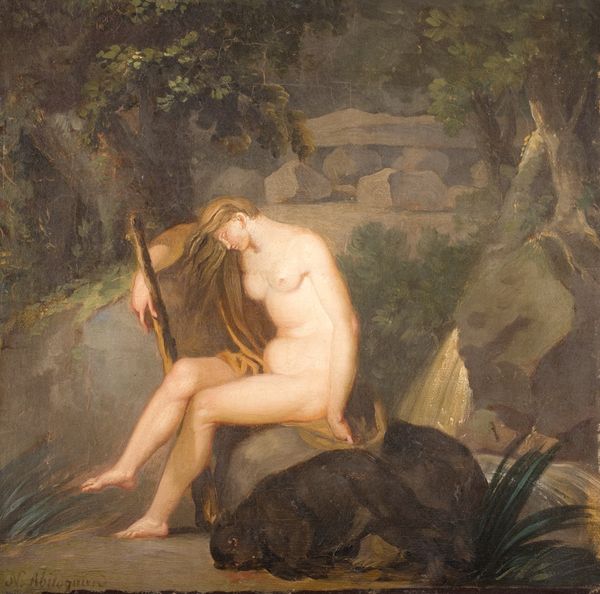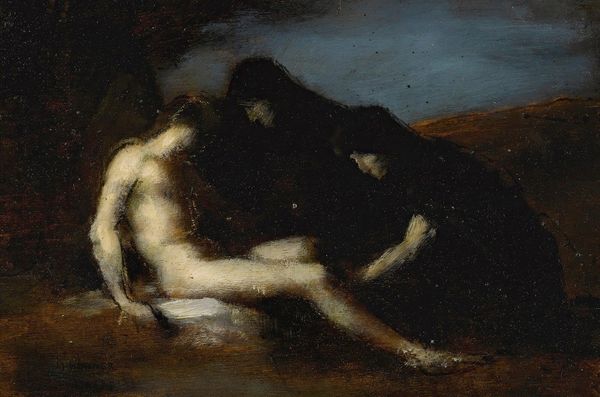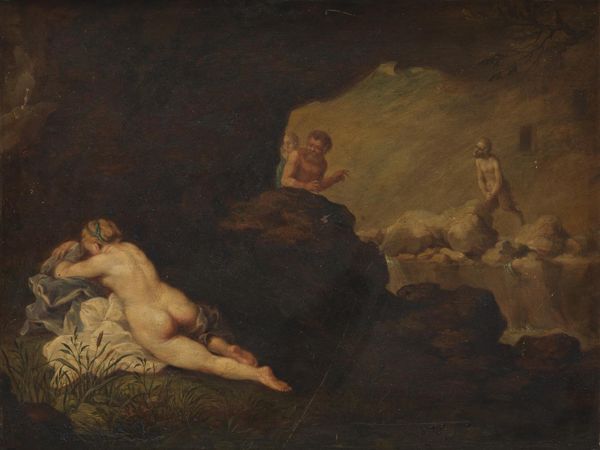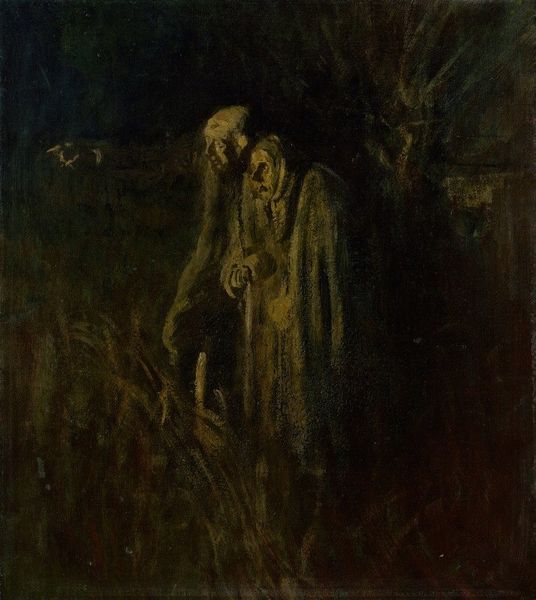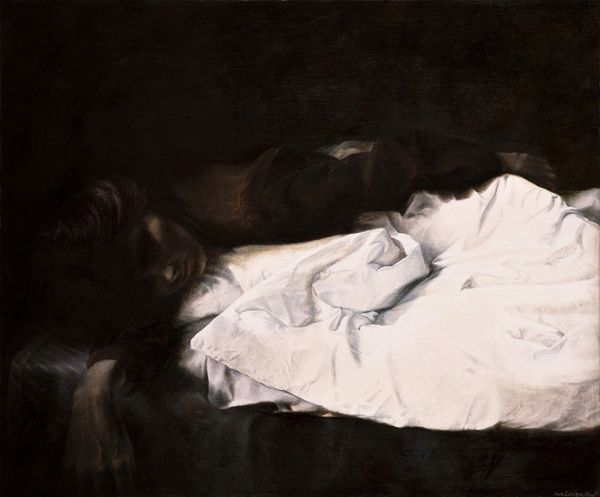
painting, oil-paint
#
portrait
#
painting
#
oil-paint
#
charcoal drawing
#
figuration
#
romanticism
#
genre-painting
Dimensions: 82.5 x 116 cm
Copyright: Public domain
Editor: This is "The Witch," an oil painting by Jean-François Portaels. I find the darkness quite striking and, frankly, a little unsettling. There's a palpable sense of fear in the woman's face. What do you see in this piece? Curator: I see a potent commentary on the historical construction of female power and its demonization. This image plays into the 19th-century fascination with the “witch” as an outsider, a figure simultaneously feared and eroticized. How do you think Portaels's choice of lighting impacts the viewer's interpretation of her identity? Editor: I think it definitely adds to the mystery and makes her seem dangerous, like she is hiding something. The deep shadows certainly play into stereotypes about witches being figures of darkness. Curator: Exactly. The darkness is a key visual element here, linking the woman to superstition and primal fear. But consider, too, the socio-political context: anxieties about female autonomy were often projected onto these figures, labeling independent women as threats to the patriarchal order. The cat only enhances this feeling. Do you get the sense that Portaels might also be inviting a sense of empathy or even admiration for the subject? Editor: I didn’t really consider it that way at first, but maybe the fact that she’s so defiant suggests a kind of power, even if it’s rooted in fear and prejudice. It is like the figure has been stripped to their bare identity. Curator: Precisely! This ambiguity is where the work gains complexity. It simultaneously perpetuates and questions prevailing narratives about female agency and power, inviting us to reconsider the legacy of witch hunts and their relationship to contemporary struggles for gender equality. Editor: That's a very insightful way to look at it. It challenges the simple good versus evil interpretation. Curator: It really highlights the importance of considering the artwork within broader social structures. We learned to not only see, but critically examine how art intersects with identity and power.
Comments
No comments
Be the first to comment and join the conversation on the ultimate creative platform.

